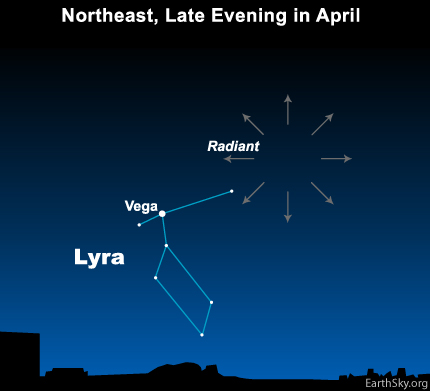Lyrids Quick Facts
Lyrids Meteor Shower Dates: April 16 to April 26
Peak Dates: ~ April 22nd
Peak Meteor Showers: 10-20 under perfect conditions*
Best Viewing Times: At night after moonset, but before dawn
Originating Constellation: Lyra
*=Some years can see heightened activity in which up to 100 meteors can be seen, but that is rare. Expect 10-20 meteors per hour.
Summary
Lasting from April 16th to April 26th, with an annual peak of around April 22nd, the Lyrids Meteor shower is a wonderful meteor shower to check out. The radiant of the meteor shower is located in the constellation Lyra, near this constellation’s brightest star, Alpha Lyrae (proper name Vega). Their peak is typically around April 22 each year.
Originating from Comet C/1861 G1 Thatcher, the Lyrids might be the oldest recorded meteor shower. First reported in 687 BC by the Chinese, no other meteor shower is nearly as old in terms of being recorded in written history. With a relatively short orbital period of 415 years for intermediate long-period comets, the Lyrids have become a consistent show. Every 60 years or so, the showers will intensify as the one-revolution dust trail of the comet is steered into Earth’s path. This results in the number of meteors increasing from 10-20 on average to rates up to 90 or 100. The last time that the 60 year intense Lyrids meteor shower occurred was in 1982, which puts the next intense shower is schedule to occur in 2042.
It is worth noting that nights without a moon will result in the most meteors being seen. Meteors from the Lyrids hover around magnitude +2, with some meteors being fireballs that case shadows before leaving behind smokey debris tails for a minute.
NASA has a great writeup of the Lyrids that is a great resource to assist those looking for more information as well.

Be the first to comment on "Lyrids Meteor Shower"